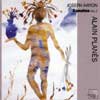Haydn Piano Sonatas, Vol II
A moderninstrument performance but one shot through with idiomatic aptness
View record and artist detailsRecord and Artist Details
Composer or Director: Joseph Haydn
Genre:
Instrumental
Label: Harmonia Mundi
Magazine Review Date: 10/2002
Media Format: CD or Download
Media Runtime: 73
Mastering:
Stereo
DDD
Catalogue Number: HMC90 1762

Tracks:
| Composition | Artist Credit |
|---|---|
| Sonata for Keyboard No. 13 (Parthia) |
Joseph Haydn, Composer
Alain Planès, Piano Joseph Haydn, Composer |
| Sonata for Keyboard No. 53 |
Joseph Haydn, Composer
Alain Planès, Piano Joseph Haydn, Composer |
| Sonata for Keyboard No. 43 |
Joseph Haydn, Composer
Alain Planès, Piano Joseph Haydn, Composer |
| Sonata for Keyboard No. 39 |
Joseph Haydn, Composer
Alain Planès, Piano Joseph Haydn, Composer |
| Sonata (un piccolo divertimento: Variations) |
Joseph Haydn, Composer
Alain Planès, Piano Joseph Haydn, Composer |
Author:
No dynamic indications or marks of expression in three of the sonatas; and No 53 (Christa Landon’s chronology is followed) has only a few. Whatever the instrument intended – No 13 was probably for harpsichord‚ the others probably for clavichord or fortepiano – interpreters are expected to use their discretion in these matters. Planès does so and though his means to an end is a modern piano‚ he doesn’t misuse its resources.
Fingerwork is clearcut but never strident‚ pedalling is geared to enhancing contrasts and repeats are embellished. Rubato is often applied‚ supremely convincingly as in the first movement development of No 39; but less so in the first movement of No 53 where Planès’s misplaced flexibility dilutes both the tense drive of the music (marked Presto) and the impact of the abrupt fermatas that‚ paradoxically‚ disjoint the line. Schiff is exemplary here.
Planès’s thoughtful response to the slow movements is reflected at a higher level in the greatest work‚ the Andante and Variations. So good is his nearspiritual probity towards the melancholia and passion conveyed through the opposing keys of F minor/F major‚ it is regrettable that he omits the five bars (included in the autograph and other sources but not in the first printing by Artaria) that bridge the last variation to the return of the theme.
Still‚ Planès is not alone in this; and his overall standard of musicianship is praiseworthy. The recording‚ though immediate‚ is nevertheless free of distracting performersniffs and mechanical noises.
Discover the world's largest classical music catalogue with Presto Music.

Gramophone Digital Club
- Digital Edition
- Digital Archive
- Reviews Database
- Full website access
From £8.75 / month
Subscribe
Gramophone Full Club
- Print Edition
- Digital Edition
- Digital Archive
- Reviews Database
- Full website access
From £11.00 / month
Subscribe
If you are a library, university or other organisation that would be interested in an institutional subscription to Gramophone please click here for further information.




